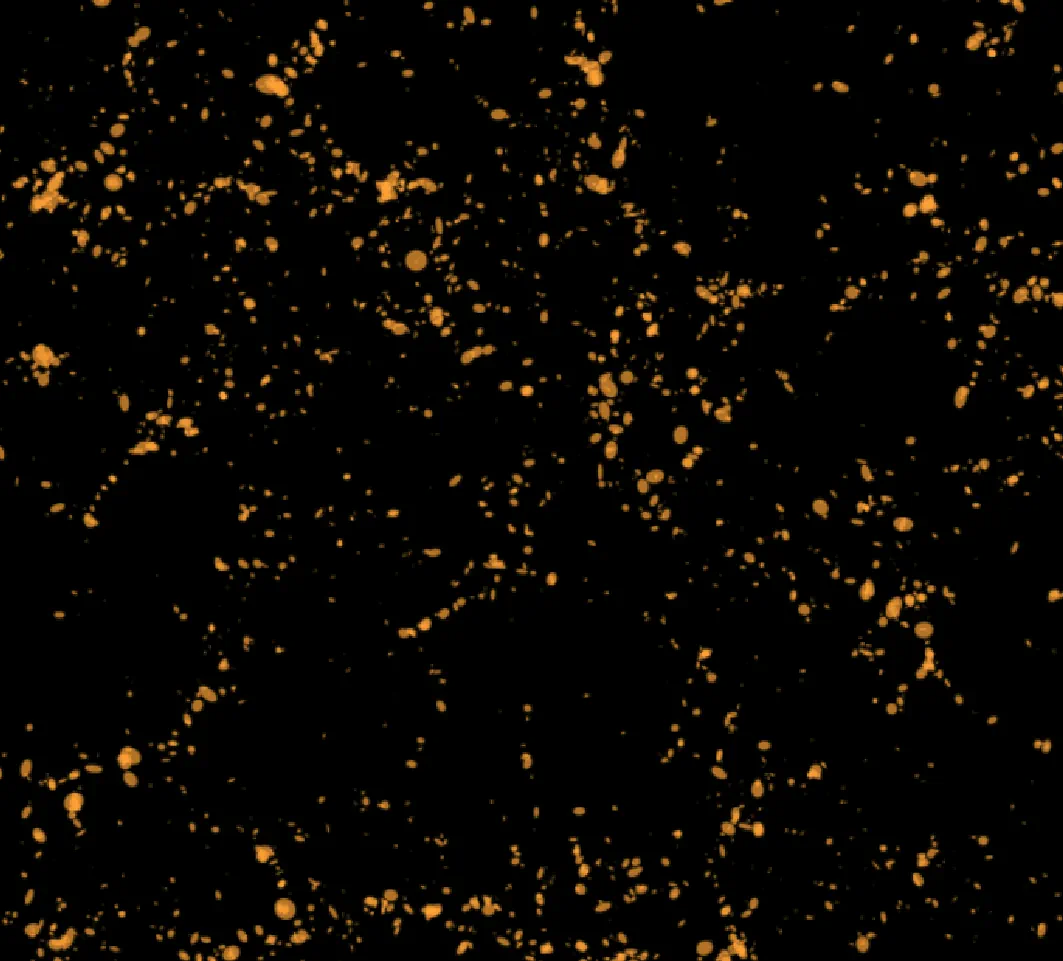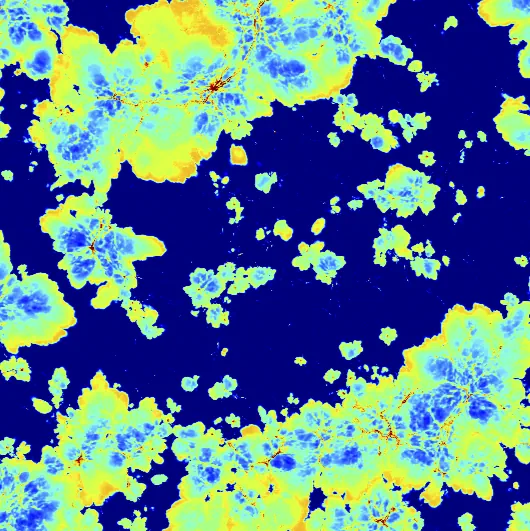Hi, I'm Kai.
Welcome to my personal webpage.

Astrophysics
For over a decade, I worked in the field of Cosmology, which aims to understand the evolution of our Universe at its largest observable scales. My research focused on improving techniques to extract constraints on cosmological models from observational data. I contributed to three areas of cosmology: galaxy clustering, galaxy alignments, and the epoch of reionization. Below you'll find short introductions to these areas, along with selected talks and publications to which I have contributed as lead or co-author.
Galaxy Clustering
The distribution of galaxies across the universe has been mapped for decades by various galaxy surveys (see CFHTLS, DES or KiDS for recently concluded projects). These surveys have revealed patterns in the galaxy distribution which resemble the so-called "cosmic web", a network of filaments which stretches across the entire observable universe. At the connection points of filaments, we observe galaxy clusters with typically hundreds of objects, while the regions between filaments, called "voids", are almost completely empty. The statistical properties of the cosmic web and their change over time depend on the expansion history and the matter content of the Universe. They can therefore be used to derive constraints on cosmological models that describe the evolution of the Universe. However, these constraints rely on accurate models for systematic effects in the measurements. One of the main systematics is the so-called galaxy bias, which describes how galaxies trace the full matter distribution. Together with my collaborators I have studied the accuracy of analytical galaxy bias models using cosmological simulations, focusing on second- and third-order clustering statistics.

Publications
- Testing the consistency of three-point halo clustering in Fourier and configuration space
- Linear and non-linear bias: predictions versus measurements
- What determines large scale galaxy clustering: halo mass or local density?
- Non-local bias contribution to third-order galaxy correlations
- Comparing halo bias from abundance and clustering
- Measuring the growth of matter fluctuations with third-order galaxy correlations
Shapes and Alignment of Galaxies
The shapes of galaxies and their alignment with one another are key cosmological observables in next generation galaxy surveys such as the Legacy Survey of Space and Time or Euclid. These alignments arise from two distinct physical effects: gravitational lensing and intrinsic galaxy alignment. Gravitational lensing results from the bending of spacetime by the mass distributed in the cosmic web, causing light from distant galaxies to follow curved paths as it travels through the universe to us. This bending distorts the observed galaxy shapes and orientations. While these distortions are typically too weak to be detected in individual objects, they can be measured statistically across large galaxy samples. These statistical measurements reveal properties of the cosmic web's mass distribution and provide powerful constraints on cosmological models - complementing those derived from galaxy clustering. However, to reliably extract such cosmological information, it is essential to account for intrinsic galaxy alignments, which contaminate the lensing signal. Intrinsic alignments emerge from gravitational interactions between galaxies and their local environment. While these alignments have been robustly detected in samples of nearby galaxies, their strength in the more distant galaxies targeted by current weak lensing surveys remains uncertain. Together with my collaborators at the PIC Data center in Barcelona, I have developed simulations to predict the impact of intrinsic alignments on weak lensing measurements in the Dark Energy Survey and Euclid. These simulations help test the validity of analytical models for intrinsic alignments which are employed in cosmological analyses.

Publications
- Modeling intrinsic galaxy alignment in the MICE simulation
- Redshift and stellar mass dependence of intrinsic shapes of disc-dominated galaxies from COSMOS observations below z = 1.0
- Subhaloes gone Notts: subhaloes as tracers of the dark matter halo shape
- Accurate dark-matter halo elongation from weak-lensing stacking analysis
- Third-order intrinsic alignment of SDSS BOSS LOWZ galaxies
- New catalogue of dark-matter halo properties identified in MICE-GC -- I. Analysis of density profile distributions
Epoche of reionization
According to the standard model of cosmology, the early universe was filled with ionized gas, consisting mainly of hydrogen and helium. As the universe expanded, this gas cooled and became neutral until the first stars formed several hundred million years later. The radiation from these stars created bubbles of ionized gas around them. These bubbles gradually expanded and merged, eventually filling almost the entire universe with ionized gas once again. This period is known as the epoch of reionization. Today, most of the ordinary (or baryonic) matter in the universe still exists in the form of ionized hydrogen and helium. The epoch of reionization is an active area of research, particularly with the deployment of a new generation of radio telescopes, such as the Square Kilometre Array and the Hydrogen Epoch of Reionization Array. These telescopes aim to detect the faint electromagnetic radiation emitted by neutral hydrogen during the epoch of reionization—the so-called 21-cm line. In my work on reionization, I applied the bias model, commonly used in galaxy clustering analysis, to model the second- and third-order statistics of the neutral hydrogen distribution during reionization and relate them to the statistics of the underlying dark matter field. Together with my collaborators, I tested this model using a large suite of simulations, which predict the signals expected in upcoming 21-cm observations.

Publication Databases
Software Projects
quick3pc
A C++ code for fast measurements of 3-point correlation functions in a periodic box, based on the algorithm from Barriga & Gaztañaga (2002).
genIAL
A vectorized Python code for efficient modeling of intrinsic galaxy alignment in cosmological simulations.
Connect